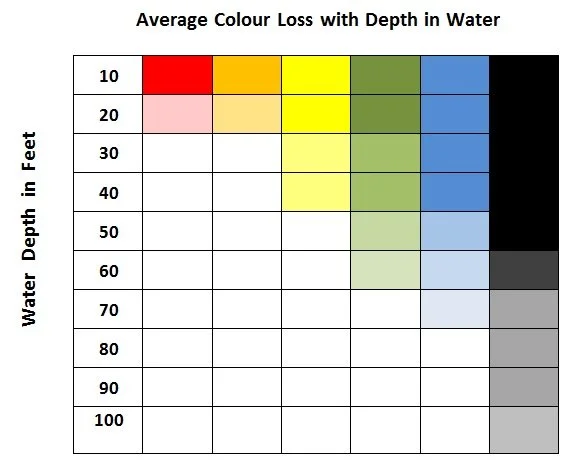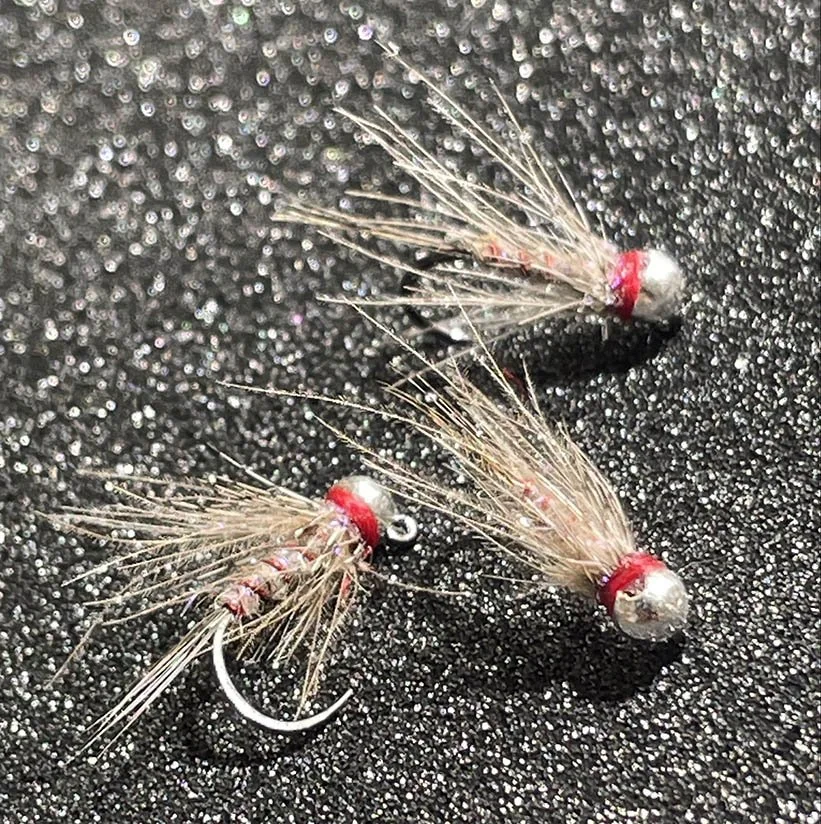Fly Selection, the Science..
Many fly fisherman swear by certain colour selections, whether you’re fishing for Trout, Kingfish or Murray Cod its seems everyone has their choice of colours. For me having a science background (M.Sc Physics from UNSW), I dont have a favourite colour or two, I select my fly colours based on the science and it works.
Besides the obvious, water conditions and incoming solar radiation (sun light) also determine fly and fly colour choice. I will explain:
Water progressively absorbs light of different wavelengths the deeper in the water your flies go. This means that colours effectively “disappear” as sunlight travels through the water column, therefore different colours disappear quicker than others.
So what does this mean to a fly fisherman? In exceptionally clear water, if your fly was about 45 to 50 feet (15 metres), the aquatic world is compromised of shades of greys and black. So its no wonder why black has been a go to colour for years when fishing deep - as that’s what the fish expect to see.
So its not just the fly colour, sun light intensity also matters, So the sun is out you have blue skies and it’s a perfect day to be out on the water. Fly colour should matter that much, right? Wrong!
The rate of colour loss varies depending on the intensity of sunlight, whether the sun is directly over head or lower on the horizon, the amount of cloud cover, as well as the water clarity itself (NTU).
My selections based on the science are
On a bright sunny day with clear water, Silver, Rose Gold and Gold beads, with materials of natural colour, like hares ear and light browns and tans.
On cloudy or rainy days I shift my selections to fluorescent and brighter coloured flies. This is due to the fact that on cloudy days, more UV light hits the waters surface than on a sunny day. Water Clarity or turbidity (measured in NTU) which is the measure of the degree to which water loses its transparency due to the presence of suspended material particles. The more suspended particle , the murkier the water seems and the higher the turbidity (higher NTU value).
Looking at the chart above you can see red is the first to disappear and is usually gone within about 15 to 20 feet of the waters surface in clear water, in high turbidity red can disappear in just a couple of feet.
So in murkier or high turbidity such as storm run off dark colours would be the preferred selection - if they can’t see it they can’t eat it!
In waters laden with algae or other organic material, flies that have contrasting colours (two tone effects) will work best.
Note: Fish species that react to disturbance in the water and chase prey over long distances its the disturbance that attracts the fish fly colour in this instance is less important, however as the fish get closer to the fly this is a different story as above on a clear bright day you should be fishing something lighter in colour and vice versa a darker colour fly in murkier water or on a day with that’s cloudy and overcast.
The Summary
In less than a few feet of clear water colour selection doesn't really matter as fish can detect the full range of the colour spectrum. As you go deeper in the water column and/or the clarity diminishes so does the perception of finite colour.
Bright Sunny days - light coloured flies
Overcast days - bright coloured flies with UV and flash
Murky / Stained water - darker coloured flies
Water with organics - two toned contrasting colours.

